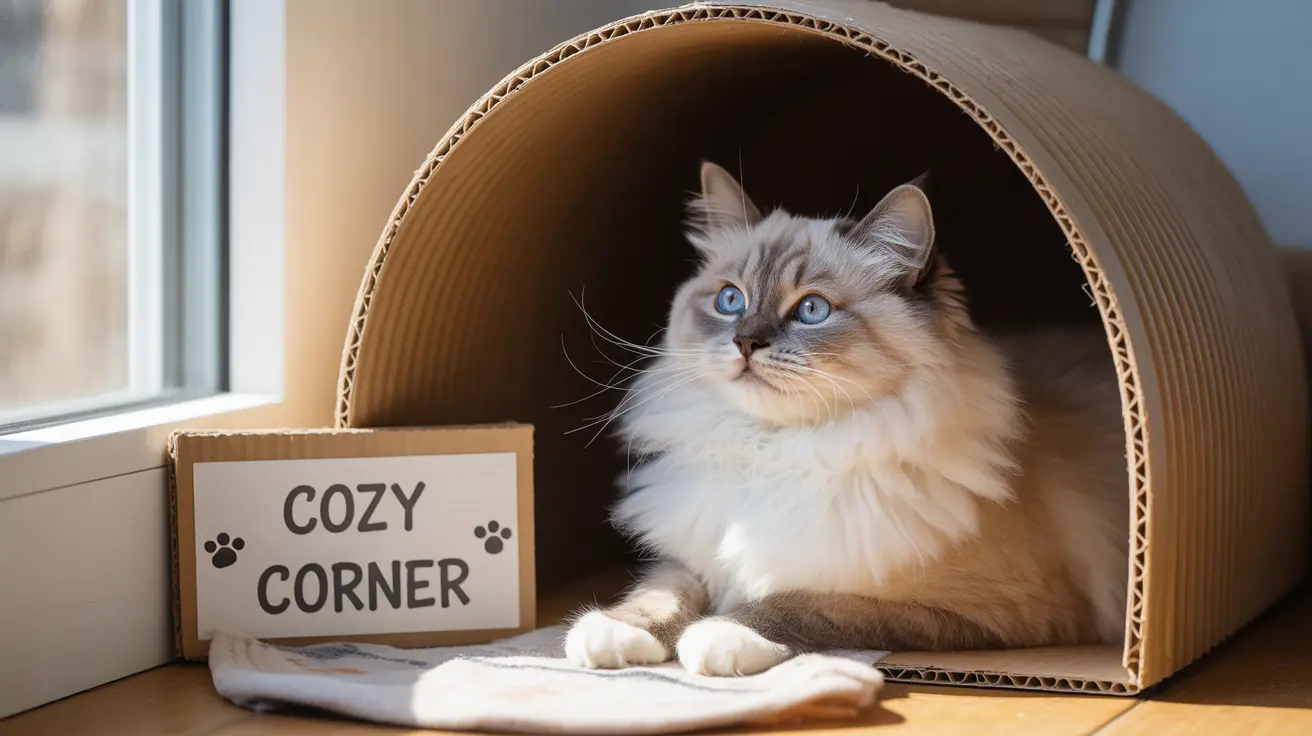Creating a DIY cat fort isn't just a fun project – it's an investment in your cat's physical and emotional wellbeing. From simple cardboard castles to elaborate outdoor catios, these dedicated spaces fulfill your cat's natural instincts while providing a safe environment for exploration and relaxation.
In this comprehensive guide, we'll explore everything you need to know about building the perfect cat fort, from material selection to design considerations that will keep your feline friend engaged and content.
Essential Materials for Building Cat Forts
The beauty of DIY cat forts lies in their versatility and affordability. Common materials include:
- Cardboard boxes and sheets
- Plywood or wooden boards
- Carpet remnants
- PVC pipes
- Hot glue and pet-safe adhesives
- Basic tools (box cutter, drill, measuring tape)
For outdoor structures, consider weather-resistant materials like treated lumber, exterior-grade plywood, and proper insulation to ensure longevity and protection from the elements.
Design Features That Cats Love
Successful cat forts incorporate elements that cater to feline instincts and behaviors:
- Multiple levels for climbing and perching
- Hidden nooks for privacy and security
- Scratching surfaces integrated into walls
- Windows or viewing platforms
- Cozy sleeping areas
- Interactive features like dangling toys or tunnel systems
Benefits of Cat Forts for Your Pet
Physical Health Benefits
Cat forts provide essential exercise opportunities that help maintain healthy weight and muscle tone. The varied terrain and climbing options encourage natural movement patterns that keep your cat physically active and engaged.
Mental Stimulation
These dedicated spaces offer crucial mental enrichment through:
- Territory exploration
- Height advantages for surveillance
- Safe hiding spots
- Interactive play opportunities
Outdoor Catios vs. Indoor Forts
While indoor forts offer convenience and weather protection, outdoor catios provide additional benefits:
- Fresh air and natural sunlight exposure
- Bird watching opportunities
- Extended territory without risks
- Reduced indoor odors from litter boxes
Safety Considerations
When building your cat fort, prioritize these safety elements:
- Sturdy construction that won't collapse
- Non-toxic materials and finishes
- Proper ventilation
- Easy access for cleaning
- Secure fasteners and joins
- Multiple entry/exit points
Maintenance and Longevity
Regular maintenance ensures your cat fort remains safe and appealing:
- Weekly cleaning of surfaces
- Monthly structural checks
- Replacement of worn materials
- Seasonal weatherproofing for outdoor structures
Frequently Asked Questions
What are the safest and most durable materials to use when building a DIY cat fort?
The safest materials include thick corrugated cardboard, untreated wood, pet-safe adhesives, and natural fiber carpeting. For durability, use sturdy plywood or solid wood for primary structures, reinforced joints, and weather-resistant materials for outdoor installations.
How do outdoor catios benefit my cat's health and safety compared to letting them roam freely?
Catios provide all the benefits of outdoor access while eliminating risks like traffic accidents, predators, diseases, and conflicts with other animals. They allow cats to enjoy fresh air and natural stimulation while remaining protected and supervised.
What design features should I include in a multi-level cat fort to enrich my cat's environment?
Include varying heights for climbing, dedicated scratching areas, hidden retreats, observation posts, and interactive elements like suspended toys. Multiple platforms at different levels encourage exercise while providing rest areas.
How can building a cat fort or catio reduce stress and behavioral problems in multi-cat households?
Cat forts provide multiple territories and escape routes, reducing competition for space and resources. Vertical space and separate areas allow cats to establish their own territories, decreasing confrontations and stress-related behaviors.
What are the best ways to weatherproof and insulate outdoor cat forts for year-round use?
Use weather-resistant materials like treated lumber and exterior-grade plywood, add proper drainage, install a waterproof roof, and include insulation in walls and floors. Create wind breaks and ensure adequate ventilation while protecting from direct weather exposure.
Conclusion
Building a cat fort is more than just a creative project – it's an investment in your cat's health, happiness, and safety. Whether you choose a simple indoor cardboard castle or an elaborate outdoor catio, providing your feline friend with their own space will enhance their quality of life while strengthening your bond.






